Recent Articles
Popular Makes
Body Types
2020 Porsche 911 Carrera Road Test and Review
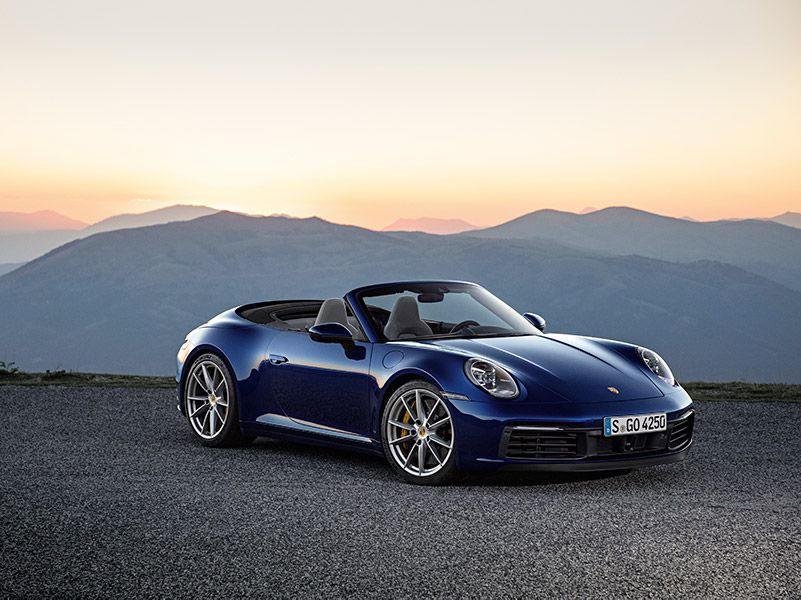
2020 Porsche 911 Cabriolet ・ Photo by Porsche
It’s hard to believe, but Porsche sells more SUVs and sedans today than sports cars. A lot more. It’s hard to believe because until this century, Porsche only produced sports cars — small, lightweight, and powerful machines considered by many to be the best in the world.
Although larger, more practical offerings like the Macan SUV and Panamera sedan are now paying the bills, the German automaker is still cranking out great sports cars. In fact, just this year it has completely redesigned the 2020 Porsche 911 Carrera, creating the eighth-generation of the unique rear-engine 2+2 that was first introduced in the mid-1960s. It’s the first redesign of the 911 since 2012. Porsche, which was founded by engineer Ferdinand Porsche just after World War II, has increased not only the sports car’s performance, but also its comfort and sophistication. With a base price just under $100,000, it competes with the Chevrolet Corvette, Aston Martin Vantage, Jaguar F-Type, and Mercedes-AMG GT-Class.
Still Offered as a Coupe or Convertible
Porsche offers the 2020 911 Carrera in many configurations, depending on your budget and desired level of performance. Two body styles are available, coupe and Cabriolet, the latter featuring a power folding soft-top that retracts or reassembles itself in just 12 seconds. Targa models with a partial fixed roof will return next year. Buyers can also choose between the standard Carrera and Carrera S — which are rear-wheel drive — and the all-wheel drive Carrera 4 and Carrera 4S.
Every new 911 is still powered by a turbocharged flat six-cylinder engine, and most models are available with a six-speed manual transmission or a new eight-speed of version of Porsche’s celebrated PDK automatic. The standard Carrera is only equipped with the automatic, which is considered the best dual-clutch gearbox in the world. Unlike every other car on the market, the Porsche 911’s engine is in the rear, not the middle as it is in many other sports cars like the new Chevy Corvette and Porsche’s own Boxster and Cayman. This is still a rear-engine car, just as 911s have been for nearly 60 years.
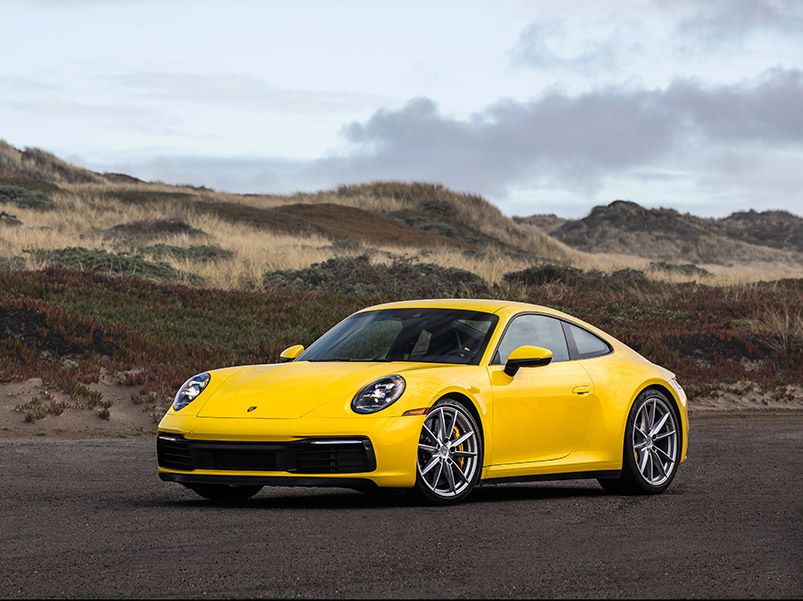
Photo by Porsche
Know the Internal Codes
Inside Porsche, every generation of 911 is assigned an internal code, and these are often used by enthusiasts to differentiate among the many versions offered over the years. This latest is called the 992, while its predecessor was the 991, which replaced the 997.
If you’re going to buy a new 911, these codes are important to know and understand. Eventually, you’ll end up in a conversation with a Porschefile who will ask you how you like your 992. This is a test to see if you know your stuff. If you respond that it’s a 911 not a 992, you’ll have failed.
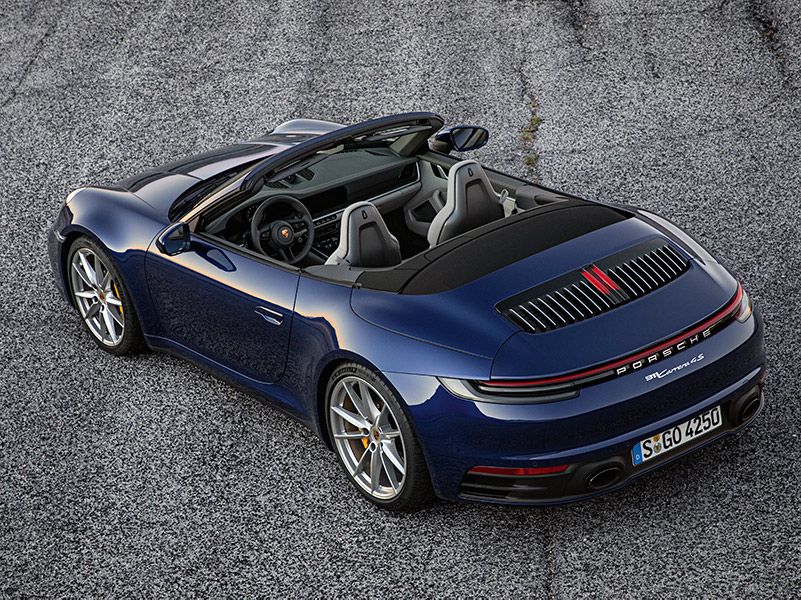
Photo by Porsche
Plan on Spending Six Figures
Basically, every 2020 Porsche 911 Carrera costs six figures. The standard 911 Carrera Coupe, has a base price of $98,750, including a $1,350 destination charge. And the price jumps to $111,550 for a Carrera Cabriolet like our test vehicle. Both are packing 379 horsepower, and Porsche says they’ll hit 60 mph in about 4 seconds.
Porsche is infamous for its expensive options, and extras drove our test car’s sticker price up to $127,120. The all-wheel drive Carrera 4 models cost $7,300 more, but they’re the way to go if you live in a wet or snowy climate. The more powerful Carrera S models start at $114,650, but they’re stacked with an additional 63 hp and other worthwhile upgrades that drop their 0-60 mph times considerably. The Carrera S Cabriolet adds about $13,000 to the price.
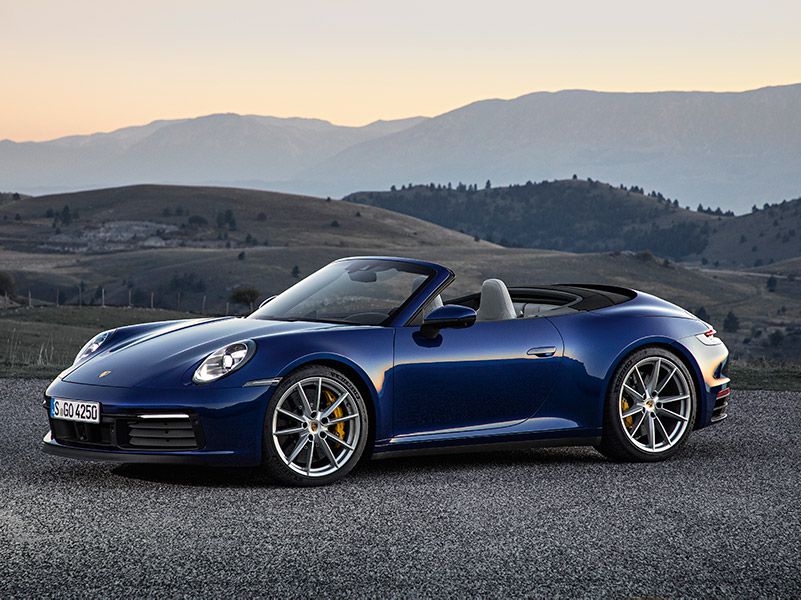
Photo by Porsche
Turbocharged Power
Smooth, powerful, and sophisticated, the 911 Carrera’s all-aluminum double overhead cam twin-turbocharged 3.0-liter flat six-cylinder is one of the greatest engines on the planet. There’s more than sufficient low-end power, even in the base Carrera, so it’s easy to drive the 911 around town. Its 331 pound-feet of torque peaks at just 1,950 rpm and doesn’t back off until you’ve reached 5,000 rpm.
The real fun begins around 3,000 rpm, which is when the turbos really start kicking in and the horizontally opposed engine begins to rev enthusiastically toward its 7,000-rpm redline. Max out the tachometer in a few gears and you’ll get the adrenaline rush you’re looking for.
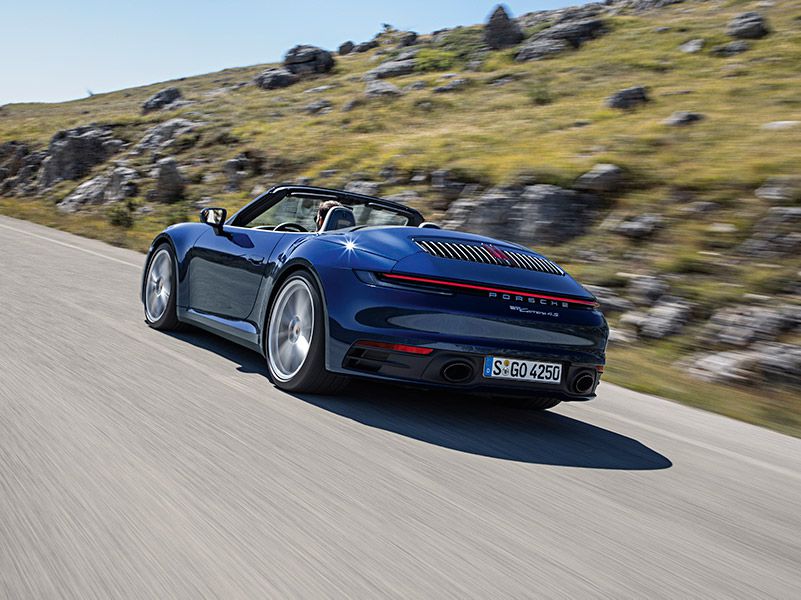
Photo by Porsche
Awesome Acceleration
One option definitely worth the extra money is the $2,720 Sport Chrono package, which includes a launch control system that maxes out the 911’s punch off the line. According to Porsche, it shaves two-tenths of a second from the sports car’s 0-60 mph time.
Here’s how its works: Select Sport Plus mode, stand on the gas and brake pedals at the same time, when the system brings the engine's revs up to 5,000 rpm, let go of the brake. The 911 slams you back in the seat like it’s propelled by a rocket. And it’s not a one-time thing. The car can do it over and over and over again. When the thrill of speed overcomes their fear of death, passengers squeal with delight.
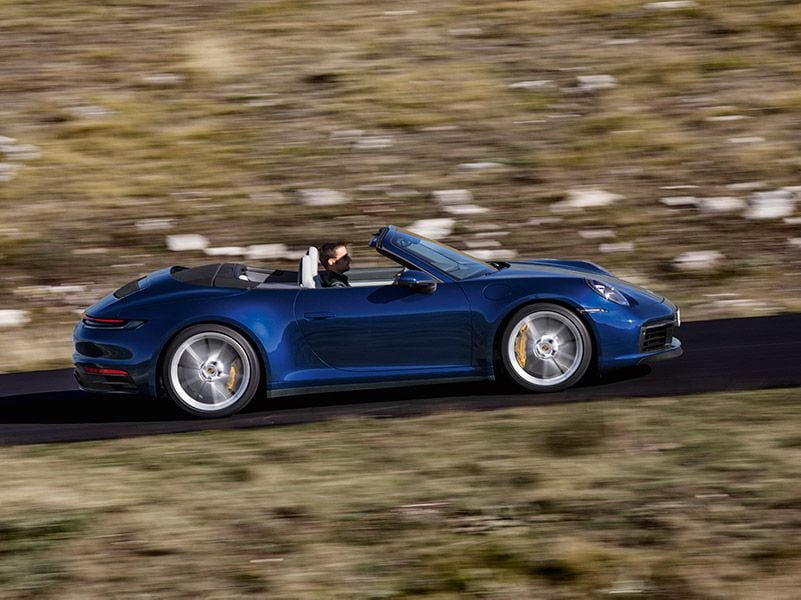
Photo by Porsche
Surprising Fuel Economy
The 2020 Porsche 911 is surprisingly fuel-efficient considering its high horsepower, and its economy numbers are strong for its class.
With its eight-speed automatic transmission, the 379-hp 911 Carrera Coupe and Cabriolet are rated by the EPA at 18 mpg in the city and 24 mpg on the highway. In mixed driving that included plenty of hard launches and some time on twisty mountain roads, we averaged 18.4 mpg in our 911 Carrera Cabriolet test vehicle. The more powerful 911 Carrera S and Carrera 4S are rated at 17 mpg city and 25 mpg highway with the manual and 18 mpg city and 24 mpg highway with the automatic. Unfortunately, all models require more expensive premium fuel.
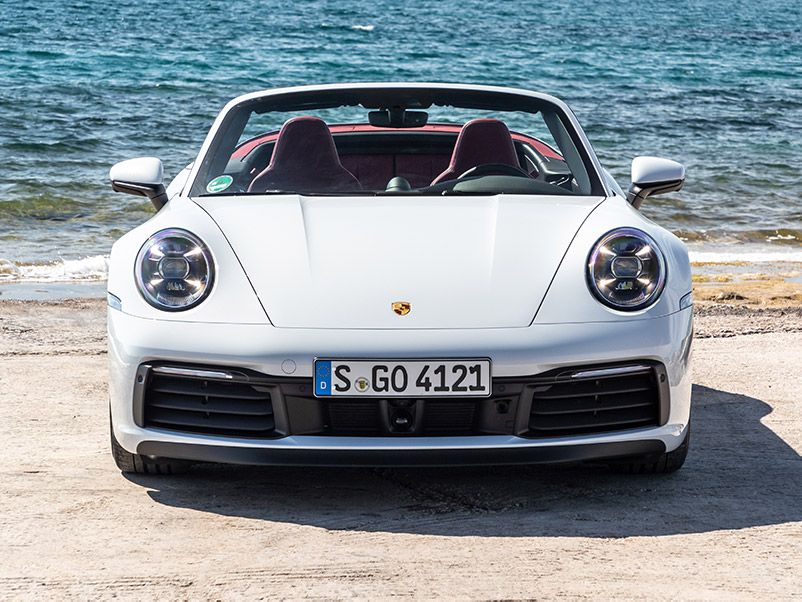
Photo by Porsche
Everyday Comfort and Timeless Good Looks
Porsche’s 911 has always done everything well, and the new version follows that tradition. The 2020 Porsche 911 is as at home on the racetrack as it is in rush hour traffic. It feels like a sports car, but it never beats you up or feels crude. This is a refined machine with a compliant ride, light steering, and a very comfortable interior. But drive it hard and it really comes alive. The turbocharged engine sounds great and likes to rev, its transmission is geared perfectly, and this is one of the best-handling cars available, with seemingly endless grip and extremely powerful brakes.
Porsche’s design philosophy is to evolve what already works, and the new 911 looks a lot like the old one and the one before that and the one before that and the one before that. This is a good thing. Although today’s 911 is much longer and wider than the original from 1965, the family resemblance is unmistakable 55 years later. And it still looks like nothing else on the road. Everyone knows this is a Porsche 911, and they look at it when you drive by.
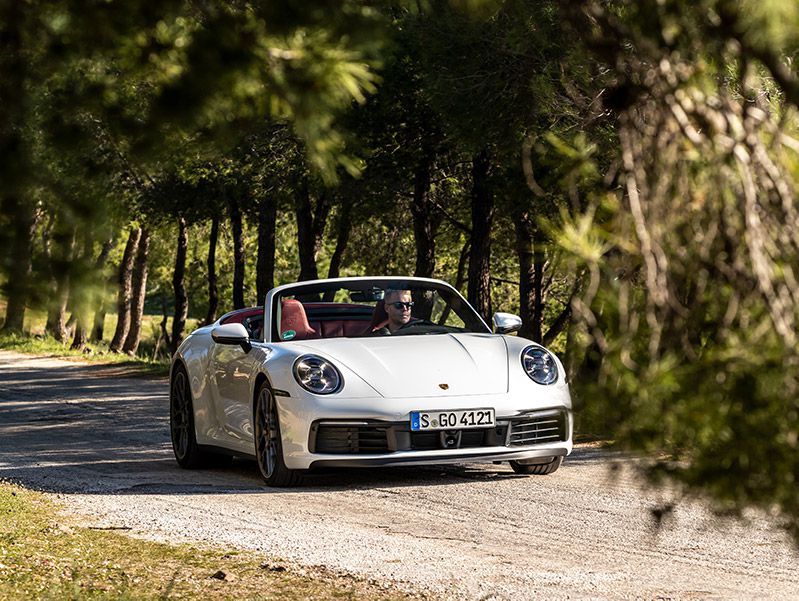
Photo by Porsche
Modern New Interior
Unlike its exterior design, the 911’s all-new cabin is giant leap forward over the old model. The design is sleek and modern, and there aren’t too many buttons. Seat comfort is exceptional and the seat heaters warm up quickly. There’s also a massive touchscreen and an updated infotainment system that’s easier to use.
Although the new automatic shifter looks like an electric razor, it’s perfectly placed and there are paddle shifters attached to the leather-wrapped steering wheel. In the Porsche tradition, the key is left of the wheel and its tachometer is right where it should be: in the center of its gauge cluster. Build quality is extremely high, everything is assembled with precision, and the materials used feel right for the Porsche’s big price. There’s also a surprising amount of room up front considering the car’s slight dimensions. The rear seat is usable for kids or one adult with very short legs.
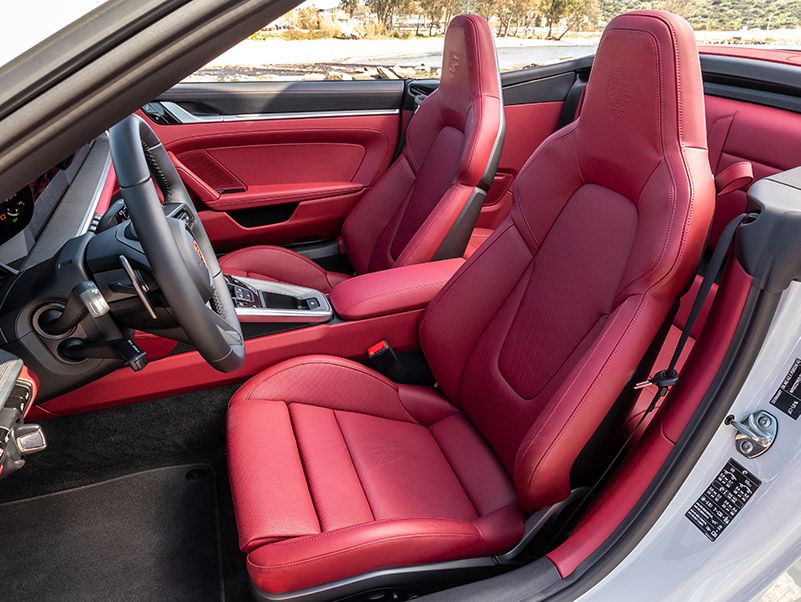
Photo by Porsche
Cargo Space and a Real Cupholder
Though passengers won’t be too pinched, with a very shallow console bin and tiny door pockets, interior storage remains limited. There’s really no place to conveniently through your wallet and cellphone. The good news is Porsche has finally given the 911 a real cupholder. And it’s big and well-placed, on the console behind the shifter. Unfortunately, there’s only one.
Because of its unique rear-engine layout and clever packaging, the 2020 911 actually has its trunk in the front. The frunk (front trunk), as it’s called, is deep and offers 4.4 cubic feet of space. It’s not much, but if you pack carefully and maximize the space, it’s just enough for a grocery run or a weeklong road trip for two. You can also put some luggage in the back seat, which folds to increase cargo capacity.
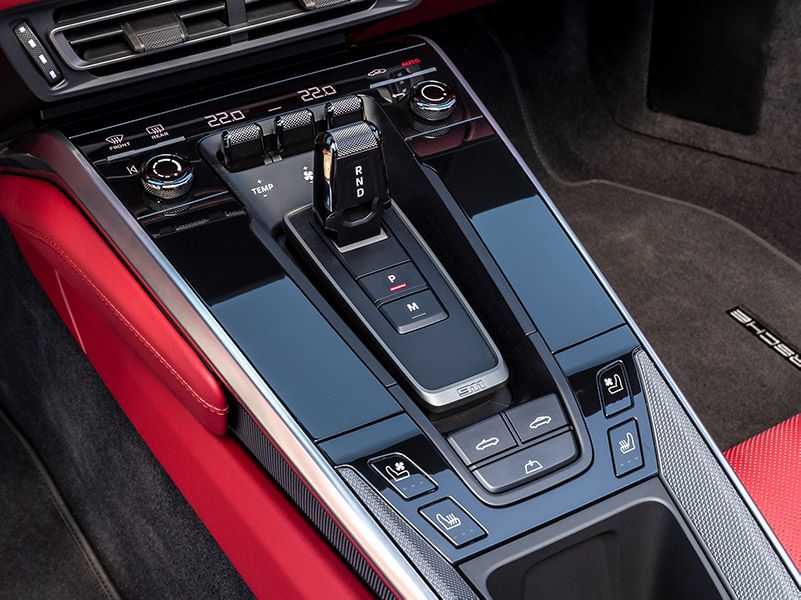
Photo by Porsche
Final Thoughts
Porsche likes to say that the 911 is always modern but never fashionable. We say it’s the only car in the world that manages to be exciting, elegant, casual, sophisticated, understated, classic, and contemporary all at the same time. And it always will be. A 911 never goes out of style.
Fast, refined, and packed with personality, the 2020 Porsche 911 Carrera is simply one of the best cars in the world. It’s a blast to drive, but comfortable enough to be driven every day. Although the standard 379-hp Carrera is more than enough for most buyers, we recommend stepping up to the Carrera S model if you can. Over time, you’ll appreciate the additional power and features. For those in the market for a sexy high-performance coupe or convertible, the 2020 Porsche 911 Carrera is hard to beat.
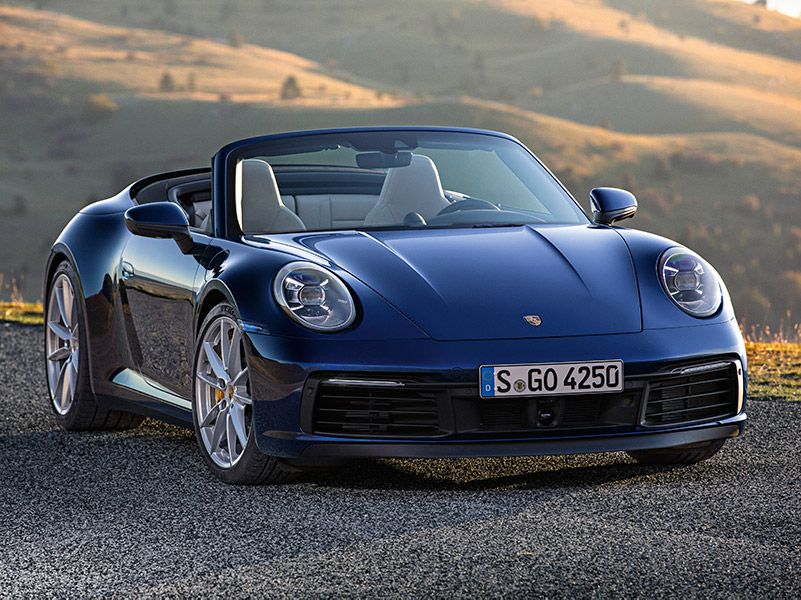
Photo by Porsche